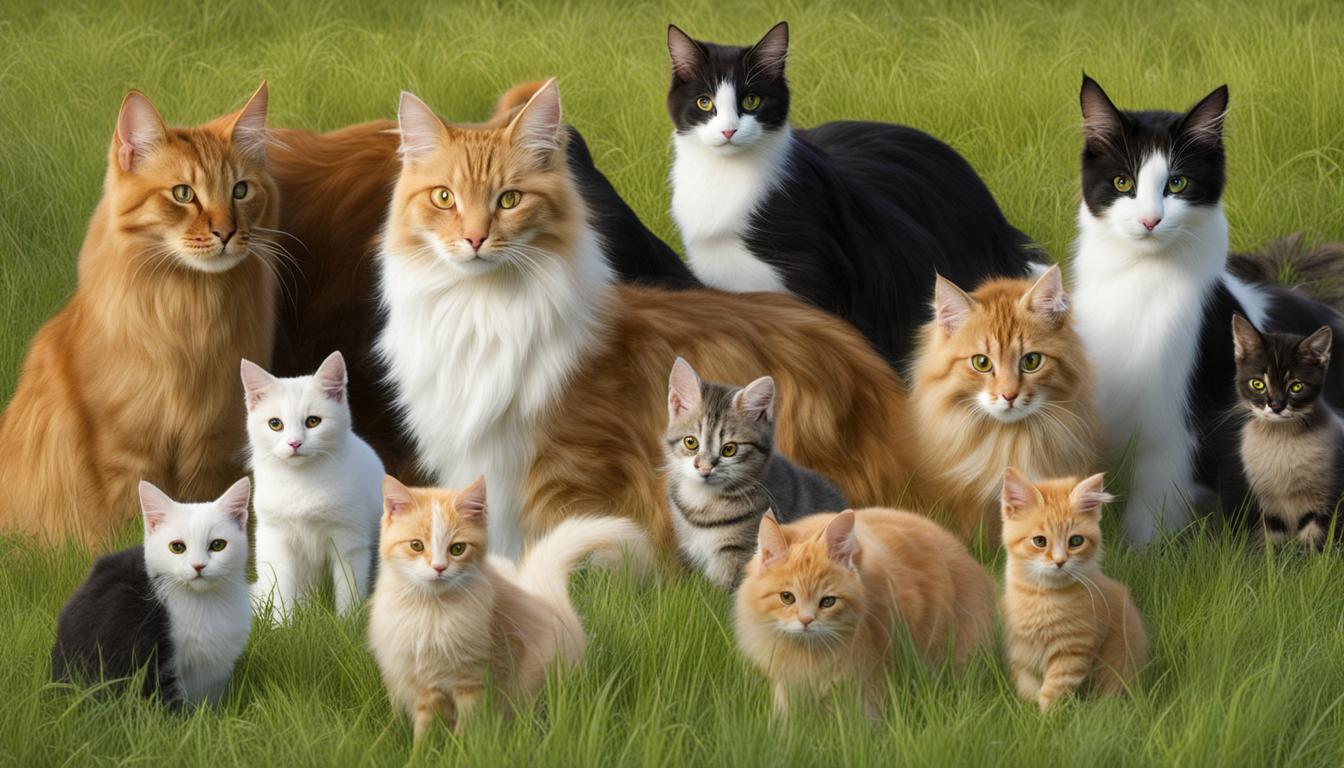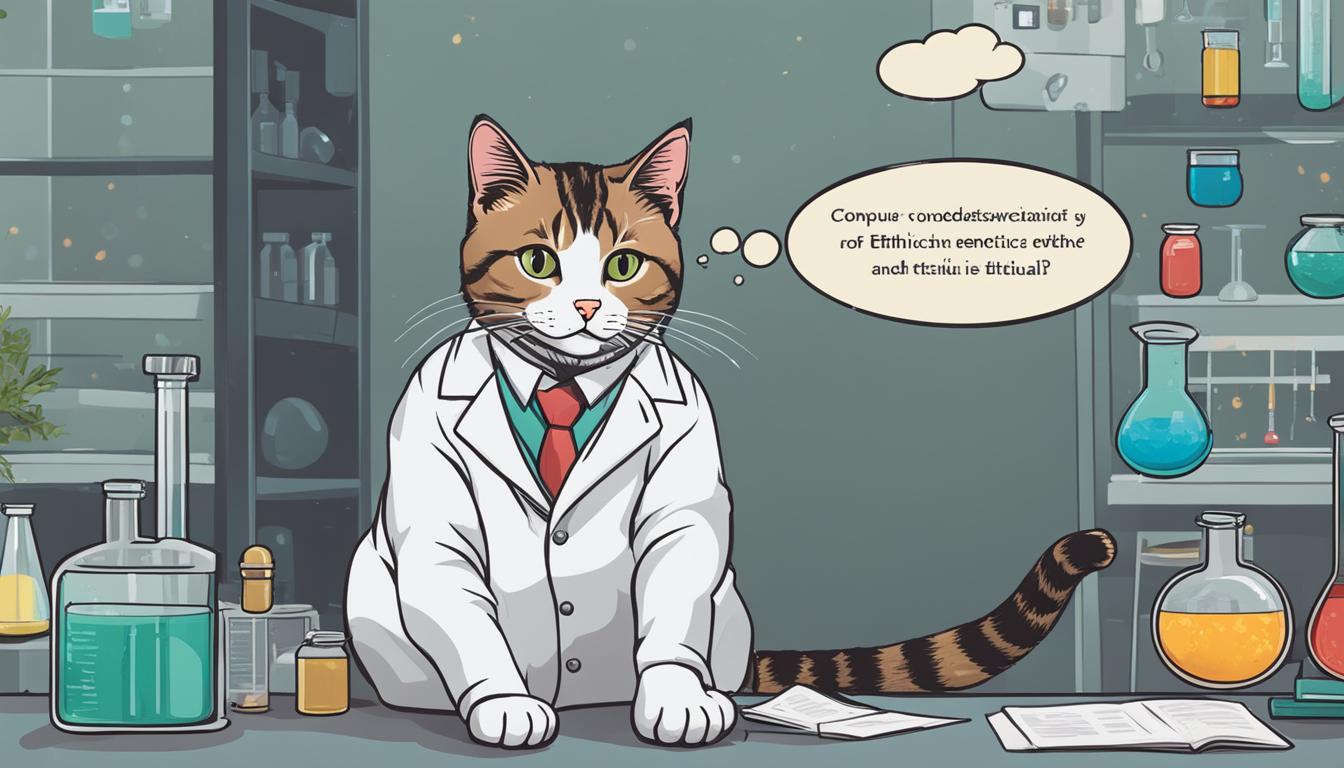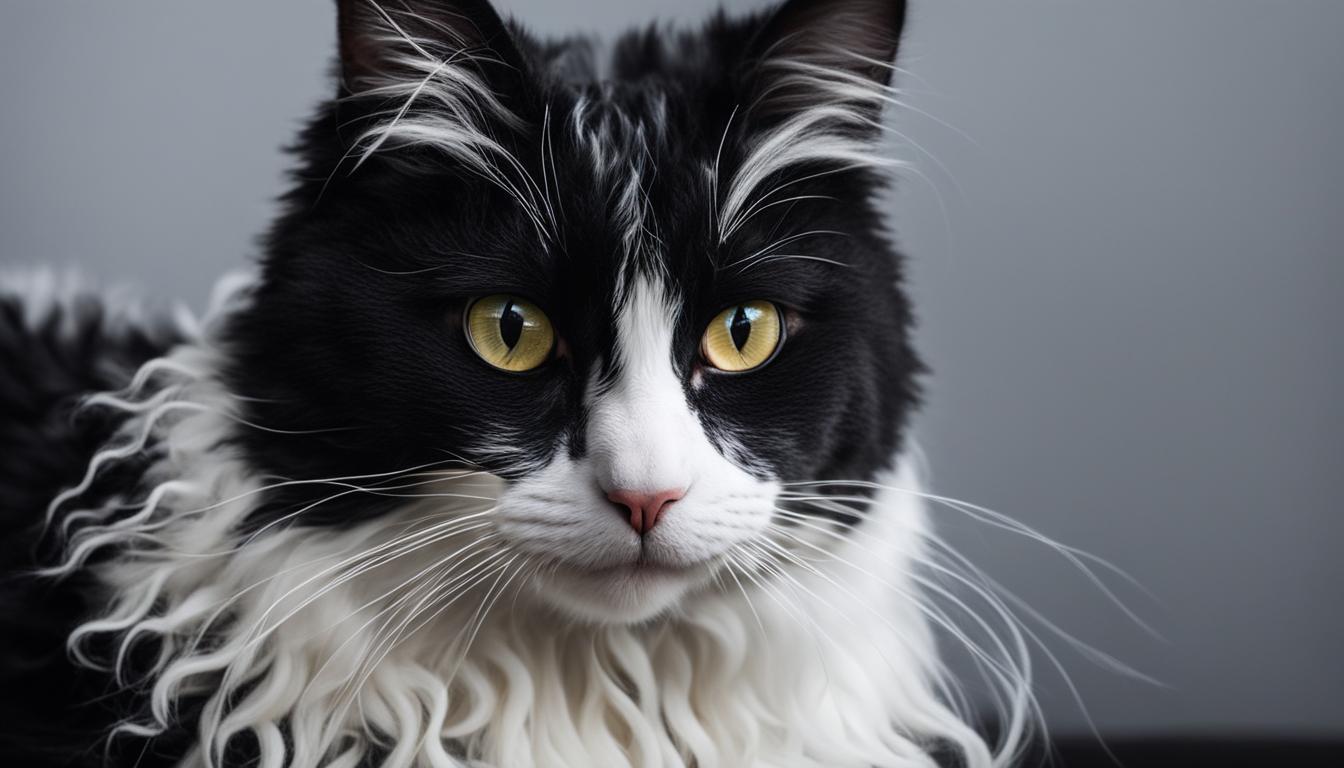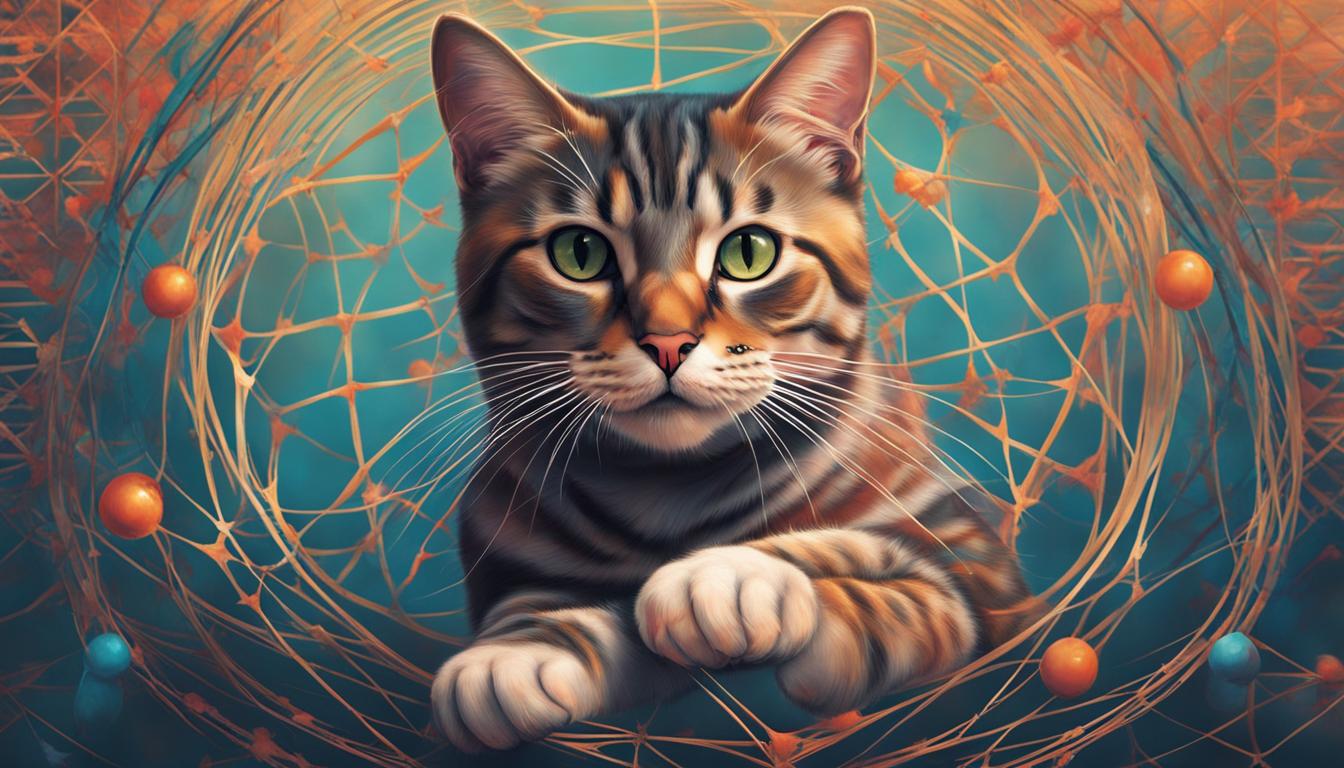As a passionate lover of all things feline, I am constantly in awe of the beauty and uniqueness of rare cat breeds. These extraordinary creatures are not only a source of fascination but also play a crucial role in our planet’s biodiversity. That’s why I’m excited to delve into the world of rare cat breed conservation programs.
These programs, dedicated to breeding rare cats for preservation, are at the forefront of genetic conservation for cat breeds. Their mission is to maintain the genetic diversity of these exceptional feline species and prevent their decline in the wild. It’s a challenging task, but one that is vital for the long-term survival of these magnificent creatures.
Key Takeaways:
- Rare cat breed conservation programs are essential for maintaining genetic diversity.
- These programs aim to prevent the decline of rare cats in the wild.
- Breeding rare cats for preservation is a crucial part of genetic conservation efforts.
- Private owners breeding exotic cats for profit pose a threat to conservation-focused breeding.
- Accredited zoos and Species Survival Plans are the only sanctioned international breeding programs for rare cats.
The Challenges of Captive Breeding for Conservation
Conservation breeding in felines is a complex endeavor that aims to save rare cat breeds from extinction. However, it faces numerous challenges that hinder its effectiveness. One of the main obstacles is the lack of documented records or pedigrees for many exotic cats in private hands. Without this information, it becomes difficult to trace their ancestry back to the wild and ensure their genetic diversity. Furthermore, indiscriminate breeding and intentional inbreeding to achieve specific traits can further diminish the fitness and genetic health of captive-bred cats.
In addition to genetic concerns, captive-bred cats also lack the necessary survival instincts and geographic knowledge required for reintroduction into the wild. These felines have been raised in controlled environments, devoid of the challenges and dangers faced by their wild counterparts. As a result, they may struggle to adapt to natural habitats and face increased risks of predation, malnutrition, and other threats. Moreover, human-wildlife conflicts can arise due to conditioned non-fear of humans, posing a risk to both the captive-bred cats and local communities.
The challenges of captive breeding for conservation highlight the importance of distinguishing between genuine efforts driven by the preservation of rare cat breeds and those motivated by commercial interests. Only through a thorough understanding of these challenges and a commitment to ethical breeding practices can we effectively conserve these magnificent feline species for future generations.
Success Stories of Rare Cat Breed Conservation Programs
Efforts to conserve unique cat breeds have yielded significant success in recent years. Through dedicated breeding programs, rare and exotic cat breeds have been preserved, ensuring the continuation of their genetic diversity and contributing to their long-term survival. Let’s explore some of the remarkable achievements in the field of rare cat breed conservation.
Rare Brown Thailand Cat Breed – Suphalak
“The preservation program for the Suphalak, a nearly extinct rare brown Thailand cat breed, has been a resounding success. Thanks to the Thailand International Maew Boran Association (TIMBA) and the efforts of Thailand catteries and individuals, over 100 Suphalak cats now exist worldwide.”
This preservation program has not only saved the breed from the brink of extinction but has also showcased the dedication and passion of the people involved in rare cat breed conservation.
Preservation of Rare Thailand Cats
Thailand is home to several unique cat breeds, each with its own significance and cultural importance. Through focused conservation efforts, breeds such as the Khao Manee, Konja, Korats, and Wichienmaat have been safeguarded and their genetic legacy protected. These breeds, known for their symbolism and historical importance, are a testament to the commitment of individuals and organizations working tirelessly to preserve rare cat breeds.
Thailand’s Ancient Book of Cat Poems
The preservation of rare cat breeds in Thailand is so deeply ingrained in the country’s culture that it inspired the creation of “Thailand’s Ancient Book of Cat Poems.” This literary masterpiece not only celebrates the beauty of these breeds but also serves as a historical record of their preservation efforts throughout the centuries. The book stands as a living testament to the profound connection between the Thai people and their feline companions.

The Role of Zoos in Feline Conservation Breeding
Zoos play a crucial role in feline conservation breeding programs, contributing to the genetic conservation of rare cat breeds and the preservation of their unique characteristics. Accredited zoos, particularly those affiliated with the American Zoological Association (AZA), actively participate in Species Survival Plans (SSPs) to ensure the long-term viability of endangered feline species.
Through SSPs, zoos collaborate to maintain genetic diversity in captive populations, strategically pairing individuals to maximize genetic health and minimize inbreeding. This approach helps preserve the overall fitness and adaptability of these species, enhancing their chances of survival in the face of environmental challenges and potential reintroduction into the wild.
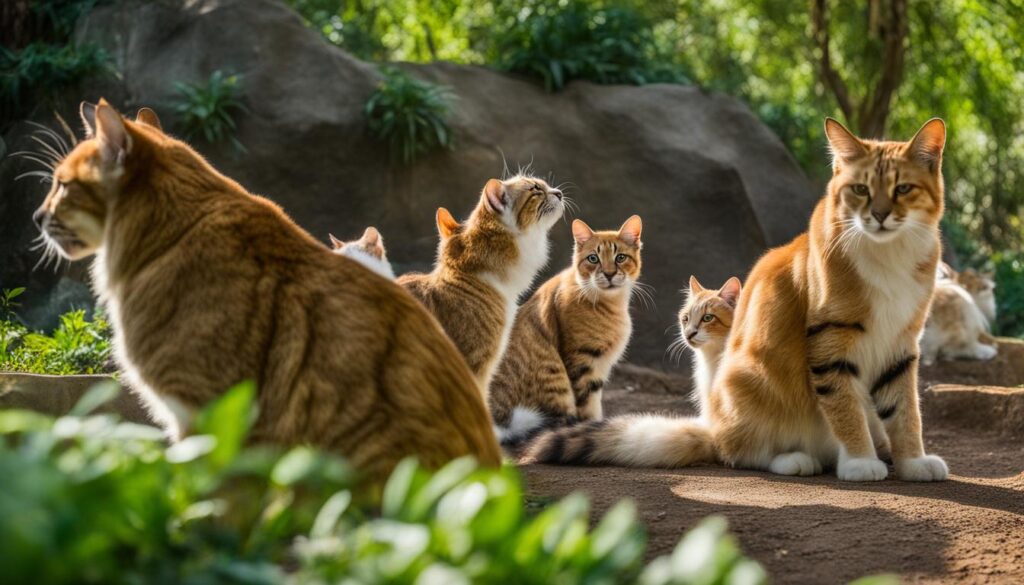
In addition to genetic conservation, zoos also contribute to the restoration of wild populations through successful reintroduction programs. For example, the Iberian lynx conservation breeding program, led by several zoos in Spain and Portugal, has seen significant success in saving this critically endangered species. By breeding lynx individuals in captivity and carefully reintroducing them into suitable habitats, zoos have helped increase the population of this iconic feline species.
The link between in-situ (on-site) and ex-situ (off-site) conservation efforts is essential for feline conservation breeding. Zoos work closely with conservation organizations and wildlife management authorities to establish and maintain wildlife corridors, ensuring safe passage for animals between fragmented habitats. These corridors facilitate the movement and genetic exchange between isolated populations, promoting overall species health and resilience.
The Importance of Reproductive Technologies
Advancements in reproductive technologies further enhance the effectiveness of feline conservation breeding programs. Techniques such as artificial insemination and embryo transfer allow for the controlled management of genetic diversity within captive populations. These technologies can overcome barriers such as geographical distance between potential breeding pairs or reproductive challenges faced by certain individuals.
Continued research and development in reproductive technologies, including the cryopreservation of oocytes (female germ cells), hold great promise for the future of feline conservation breeding. This technique, still considered experimental in felids, could enable the preservation of the genetic resources of endangered species and the reintroduction of new genes into existing populations.
| Advantages of Zoos in Feline Conservation Breeding | Challenges Faced by Zoos in Feline Conservation Breeding |
|---|---|
|
|
Improving the Techniques of Feline Conservation Breeding
Continuous research and development of reproductive technologies are crucial for the improvement of feline conservation breeding programs. Advances have been made in understanding the hormonal regulation of female reproductive cycles and combating male infertility. Successful artificial insemination protocols have been implemented in both domestic and non-domestic feline species. However, the cryopreservation of female germ cells, such as oocytes, remains an unresolved issue. The cryopreservation of oocytes is still considered an experimental technique in felids, although some successes have been achieved. Further progress in oocyte cryopreservation would provide an opportunity to preserve the genetic resources of endangered feline species and potentially reintroduce new genes into existing populations.
One promising area of research is the use of assisted reproductive technologies like in vitro fertilization (IVF) in feline species. IVF techniques have been successfully used in domestic cats, and efforts are underway to adapt these techniques for endangered felids. The development of IVF protocols specific to each species would allow for the collection and fertilization of eggs in controlled laboratory conditions, bypassing the challenges associated with natural mating or artificial insemination.
“We aim to apply state-of-the-art reproductive technologies to endangered felids, such as the clouded leopard, to increase the genetic diversity of captive populations and support reintroduction efforts in the wild,” says Dr. Sarah Johnson, a wildlife biologist specializing in feline conservation breeding.
Additionally, genetic technologies such as genome sequencing and genetic profiling are being utilized to better understand the genetic makeup of rare cat breeds. This information can help identify individuals with valuable genetic traits that should be prioritized for breeding. With advances in genetic engineering, there is also potential for targeted gene editing to correct genetic abnormalities or introduce beneficial traits.
Incorporating Genetic Diversity in Breeding Programs
Conservation breeding programs must aim to maintain and increase genetic diversity within captive populations to ensure the long-term survival of rare cat breeds. This can be accomplished through the development of studbooks, which track the ancestry and genetic contributions of individual cats. By carefully selecting breeding pairs based on their genetic compatibility, breeders can reduce the risk of inbreeding and increase the overall genetic diversity of the population.
Furthermore, international collaborations and exchange programs between zoos and conservation organizations can help facilitate the movement of individuals between different institutions, thereby introducing new genetic material into captive populations. The sharing of genetic resources and expertise ensures that breeding programs are not limited to a single location or institution, maximizing the potential for successful conservation outcomes.
| Advantages | Disadvantages | |
|---|---|---|
| Artificial Insemination | – Allows for controlled breeding and genetic diversity management – Can overcome mating difficulties |
– Requires specialized equipment and expertise – Success rates can vary depending on species |
| In Vitro Fertilization (IVF) | – Offers a potential solution for species with limited mating opportunities – Increases genetic diversity within captive populations |
– Requires extensive research and optimization for each species – Can be costly and resource-intensive |
| Genetic Profiling | – Provides valuable information for breeding selection and prioritization – Helps identify individuals with unique or beneficial genetic traits |
– Requires access to advanced genetic technologies – Ethical considerations regarding privacy and consent |
| Genetic Engineering | – Offers the potential to correct genetic abnormalities and introduce beneficial traits – Can enhance the health and adaptive capabilities of endangered species |
– Raises ethical concerns and requires careful regulatory oversight – Long-term effects on natural populations are unknown |
Overall, continuous innovation and scientific advancements are necessary to improve the effectiveness of feline conservation breeding programs. By combining reproductive technologies, genetic profiling, and collaborative efforts, we can make significant strides in the preservation of rare cat breeds and ensure a brighter future for these magnificent feline species.

Conclusion
So, after diving into the world of rare cat breed conservation breeding programs, it’s clear that these initiatives are of utmost importance in ensuring the preservation of these unique feline species. As we’ve explored, the genetic conservation of cat breeds and the overall conservation breeding in felines is a complex endeavor, with both challenges and success stories along the way.
Despite the limitations of captive breeding and the risks associated with indiscriminate breeding for profit, there are shining examples of programs that have made a significant impact. Through the dedication of organizations like the Thailand International Maew Boran Association (TIMBA) and the collaboration between accredited zoos, we have witnessed the restoration of populations and the thriving of once nearly extinct breeds.
Looking ahead, the improvement of reproductive technologies will continue to play a crucial role in the effectiveness of feline conservation breeding programs. Ongoing research in areas like cryopreservation opens up exciting possibilities for preserving the genetic resources of endangered feline species and introducing new genes into existing populations.
By prioritizing the conservation of rare cat breeds, we are not only safeguarding their survival but also honoring the beauty and diversity of these magnificent creatures. It is up to all of us, whether as dedicated individuals or conservation organizations, to continue our efforts in breeding programs for rare cats and to ensure the long-term protection and well-being of these precious feline species.
FAQ
How do breeding programs for rare cat breeds contribute to conservation?
Breeding programs for rare cat breeds play a crucial role in the conservation and preservation of these unique feline species. These programs aim to maintain genetic diversity and prevent the decline of wild populations.
Are there any legal breeding programs for exotic cats?
Yes, the only sanctioned international breeding plans for exotic cats are carried out in accredited zoos through Species Survival Plans (SSPs).
What is the difference between conservation-focused breeding and commercial breeding?
Private owners claiming to save tigers or other big cats are actually breeding them for profit, contributing to the multimillion-dollar exotic animal market. It is essential to distinguish between conservation-focused breeding efforts and those driven by commercial interests.
Can captive breeding save species in the wild?
Captive breeding alone cannot save species in the wild, as many of the exotic cats in private hands do not have documented records or pedigrees tracing their ancestry back to the wild. Indiscriminate breeding and intentional inbreeding further diminish the genetic diversity and fitness of captive-bred cats.
Have there been any successful conservation breeding programs?
Yes, there have been successful conservation breeding programs for rare cat breeds. For example, the Thailand International Maew Boran Association (TIMBA) rescued the nearly extinct Suphalak, a rare brown Thailand cat breed, through a preservation program.
How do zoos contribute to feline conservation breeding?
Zoos play a crucial role in feline conservation breeding programs, particularly those accredited by the American Zoological Association (AZA). These zoos participate in Species Survival Plans (SSPs) and make efforts to maintain genetic biodiversity in captivity.
What advancements have been made in reproductive technologies for feline conservation breeding?
Advances have been made in understanding the hormonal regulation of female reproductive cycles and combating male infertility. Successful artificial insemination protocols have been implemented in both domestic and non-domestic feline species.
Can cryopreservation of oocytes benefit feline conservation breeding?
Yes, the cryopreservation of oocytes holds promise for preserving the genetic resources and reintroducing new genes into existing populations of endangered feline species. However, this technique is still considered experimental in felids.

